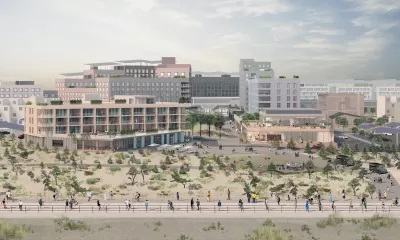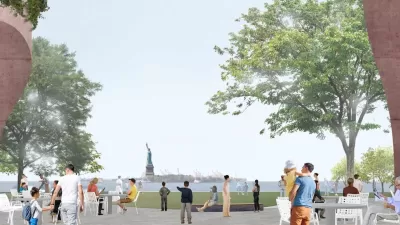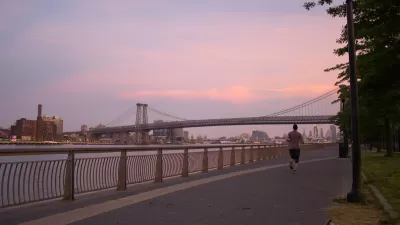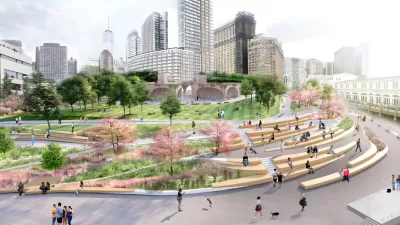The project, which relies largely on geothermal energy to minimize its carbon footprint, will bring affordable housing and boost storm resilience to an area devastated by Hurricane Sandy.

A $1-billion project on New York's Rockaway peninsula promises to be the city's first net-zero community, according to an article by Aysha Diallo. "The development will incorporate geothermal heating, passive house design to optimize energy efficiency, and a plan to raise the storm surge elevation, given the land’s vulnerability to flooding."
"The site, named Arverne East, is expected to have 1,650 units of housing, 1,320 of which are designated as affordable for formerly homeless, low, moderate and middle-income households. The design incorporates a range of green spaces, including a 35-acre nature preserve and an urban farm," writes Diallo.
As with similar redevelopment efforts, some residents worry the new development will deepen the socio-economic divide and drive up housing costs. "Compared to the west side of the peninsula, which has long been a summer getaway spot for middle- to upper-class city residents, these neighborhoods have larger minority populations and have historically fallen behind." But others hope the project will also bring much-needed economic development.
The developers will also shore up the peninsula's flood defenses, building resilience against future events like Hurricane Sandy. "The developers plan to elevate the land between three and eight feet, depending on location, so that ground floor spaces across the property are elevated by a total of 16 feet or more — higher than Hurricane Sandy’s storm surge of 14 feet."
Arverne East is the result of a years-long design and selection process that culminated in the current design by L+M Development Partners, the Bluestone Organization and Triangle Equities.
FULL STORY: NYC’s First Net Zero Community Brings Housing to Storm-Ravaged Neighborhood

Study: Maui’s Plan to Convert Vacation Rentals to Long-Term Housing Could Cause Nearly $1 Billion Economic Loss
The plan would reduce visitor accommodation by 25,% resulting in 1,900 jobs lost.

North Texas Transit Leaders Tout Benefits of TOD for Growing Region
At a summit focused on transit-oriented development, policymakers discussed how North Texas’ expanded light rail system can serve as a tool for economic growth.

Why Should We Subsidize Public Transportation?
Many public transit agencies face financial stress due to rising costs, declining fare revenue, and declining subsidies. Transit advocates must provide a strong business case for increasing public transit funding.

How to Make US Trains Faster
Changes to boarding platforms and a switch to electric trains could improve U.S. passenger rail service without the added cost of high-speed rail.

Columbia’s Revitalized ‘Loop’ Is a Hub for Local Entrepreneurs
A focus on small businesses is helping a commercial corridor in Columbia, Missouri thrive.

Invasive Insect Threatens Minnesota’s Ash Forests
The Emerald Ash Borer is a rapidly spreading invasive pest threatening Minnesota’s ash trees, and homeowners are encouraged to plant diverse replacement species, avoid moving ash firewood, and monitor for signs of infestation.
Urban Design for Planners 1: Software Tools
This six-course series explores essential urban design concepts using open source software and equips planners with the tools they need to participate fully in the urban design process.
Planning for Universal Design
Learn the tools for implementing Universal Design in planning regulations.
City of Santa Clarita
Ascent Environmental
Institute for Housing and Urban Development Studies (IHS)
City of Grandview
Harvard GSD Executive Education
Toledo-Lucas County Plan Commissions
Salt Lake City
NYU Wagner Graduate School of Public Service





























